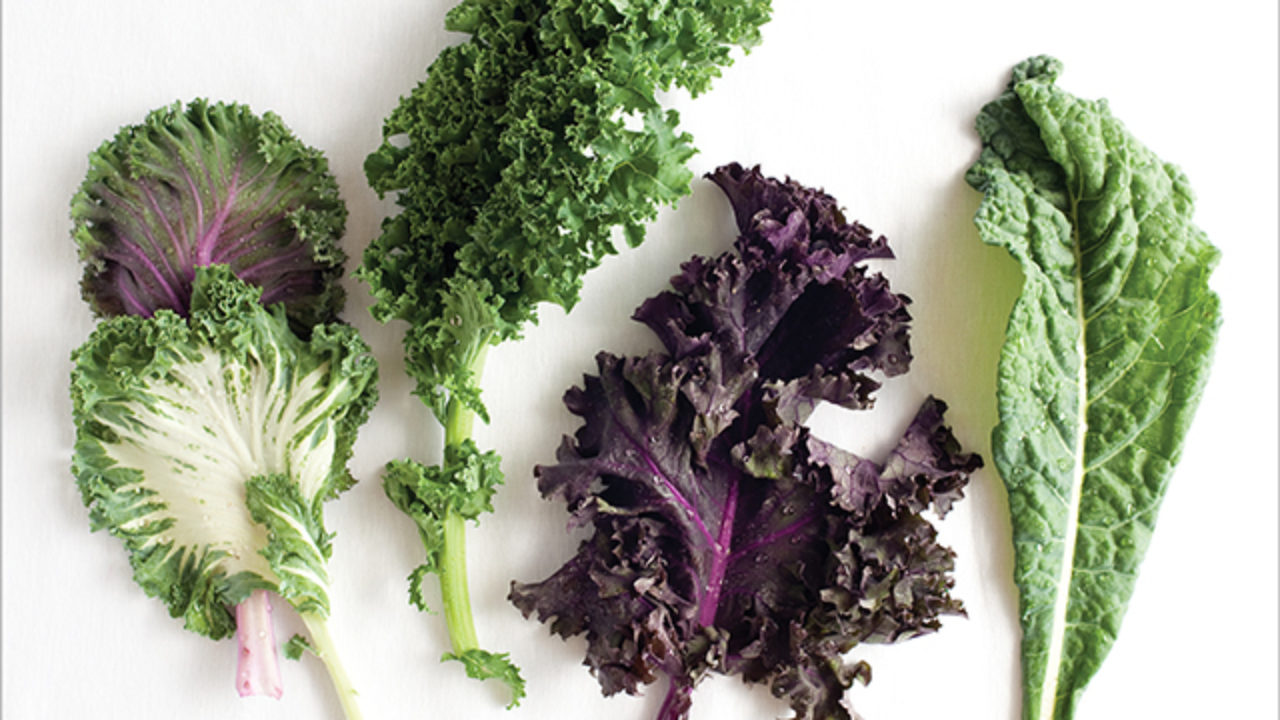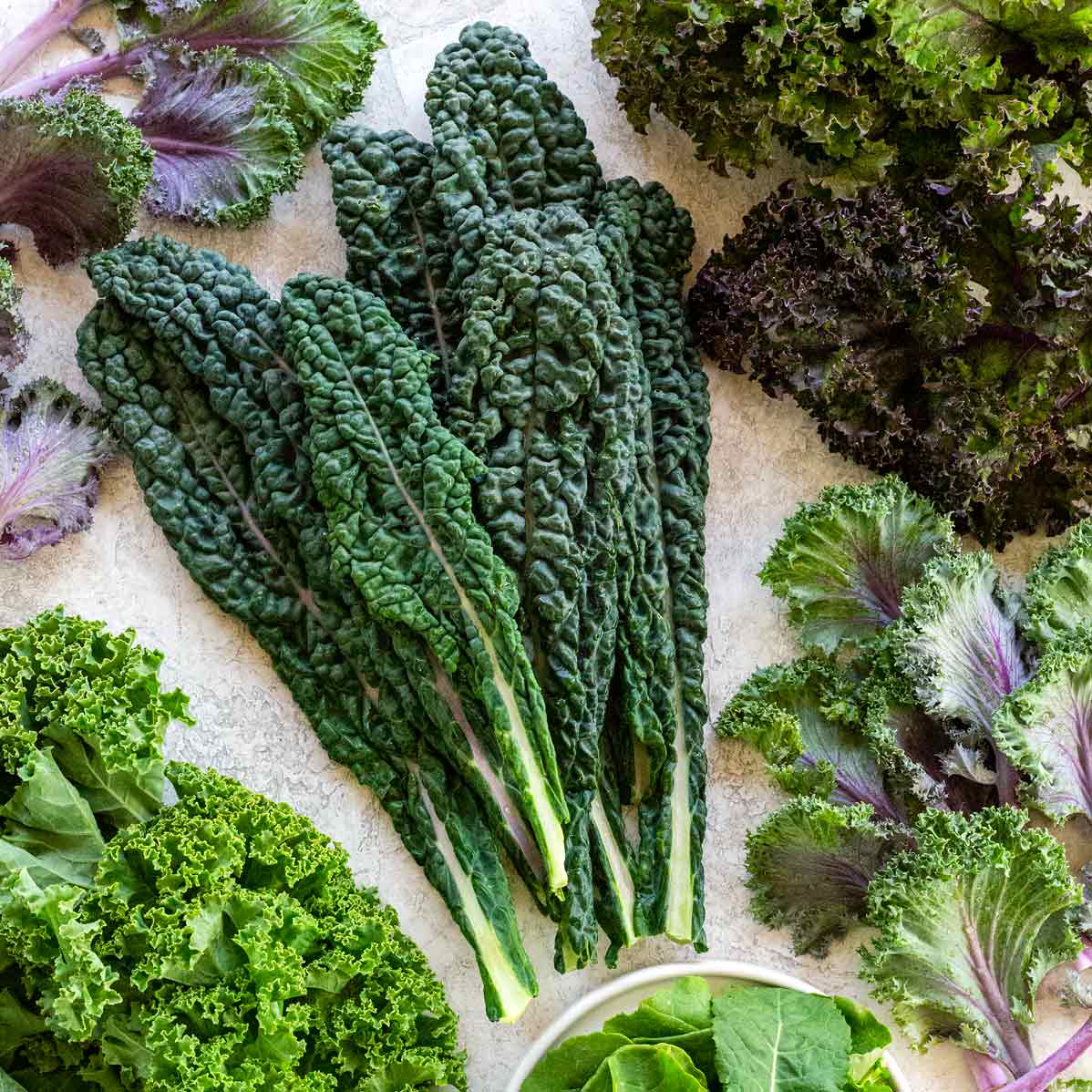
Kale is definitely one of the healthiest and most nutritious plant foods in existence. Kale is a cruciferous vegetable like cabbage, broccoli, cauliflower, collard greens and Brussels sprouts.
There are many different types of kale. The leaves can be green or purple, and have either a smooth or curly shape. The most common type of kale is called curly kale or Scots kale, which has green and curly leaves and a hard, fibrous stem.
Kale is loaded with all sorts of beneficial compounds, some of which have powerful medicinal properties and is one of the most nutrient dense foods on the planet.
A single cup of raw kale (about 67 grams or 2.4 ounces) contains :
- Vitamin A: 206% of the daily vitamins (from beta-carotene)
- Vitamin K: 684% of the daily vitamins
- Vitamin C: 134% of the daily vitamins
- Vitamin B6: 9% of the daily vitamins
- Manganese: 26% of the daily vitamins
- Calcium: 9% of the daily vitamins
- Copper: 10% of the daily vitamins
- Potassium: 9% of the daily vitamins
- Magnesium: 6% of the daily vitamins
It also contains 3% or more of the daily vitamins for vitamin B1 (thiamin), vitamin B2 (riboflavin), vitamin B3 (niacin), iron and phosphorus
This is coming with a total of 33 calories, 6 grams of carbs (2 of which are fiber) and 3 grams of protein.
Kale contains very little fat, but a large portion of the fat in it is an omega-3 fatty acid called alpha linolenic-acid.
Kale is loaded with powerful antioxidants like quercetin and kaempferol
Kale, like other leafy greens, is very high in antioxidants.
These include beta-carotene and vitamin C, as well as various flavonoids and polyphenols
 Kale can help lower cholesterol, which may reduce the risk of heart disease. Yet, cholesterol has many important functions in the body, as it is used to make bile acids, which are substances that help the body digest fats. The liver turns cholesterol into bile acids, which are then released into the digestive system whenever you eat a fatty meal. When all the fat has been absorbed and the bile acids have served their purpose, they are reabsorbed into the bloodstream and used again. Kale can help lower cholesterol, which may reduce the risk of heart disease. Yet, cholesterol has many important functions in the body, as it is used to make bile acids, which are substances that help the body digest fats. The liver turns cholesterol into bile acids, which are then released into the digestive system whenever you eat a fatty meal. When all the fat has been absorbed and the bile acids have served their purpose, they are reabsorbed into the bloodstream and used again.
Kale is one of the world's best sources of vitamin K, which is critical for blood clotting, and kale does this by "activating" certain proteins and giving them the ability to bind calcium. The form of vitamin K in kale is K1, which is different than vitamin K2 which is found in fermented soy foods and certain animal products. It helps prevent heart disease and osteoporosis.
Kale is very high in beta-carotene, an antioxidant that the body can turn into vitamin A.
Kale is a good source of minerals that most people don't get enough of, such as magnesium, potassium, and calcium.
Kale is high in lutein and zeaxanthin, which are powerful nutrients that protect the eyes from the consequences of aging. Many studies have shown that people who eat enough lutein and zeaxanthin have a much lower risk of macular degeneration and cataracts.
How to Eat
Adding kale to your diet is relatively simple. Use it in any recipe or salad that calls for leafy greens.
A popular snack is kale chips, where you drizzle some extra virgin olive oil or avocado oil on your kale, add some salt and then bake in it an oven until dry.
It tastes absolutely delicious and makes a great crunchy, super healthy snack.
A lot of people also add kale to their smoothies in order to boost the nutritional value.
Many people that are into juicing will use juiced kale as their base and then add in other vegetables, such as carrots, beets, celery, nettle, etc.
At the end of the day, kale is definitely one of the healthiest and most nutritious foods on the planet.
If you want to dramatically boost the amount of nutrients you take in, consider loading up on kale.
|